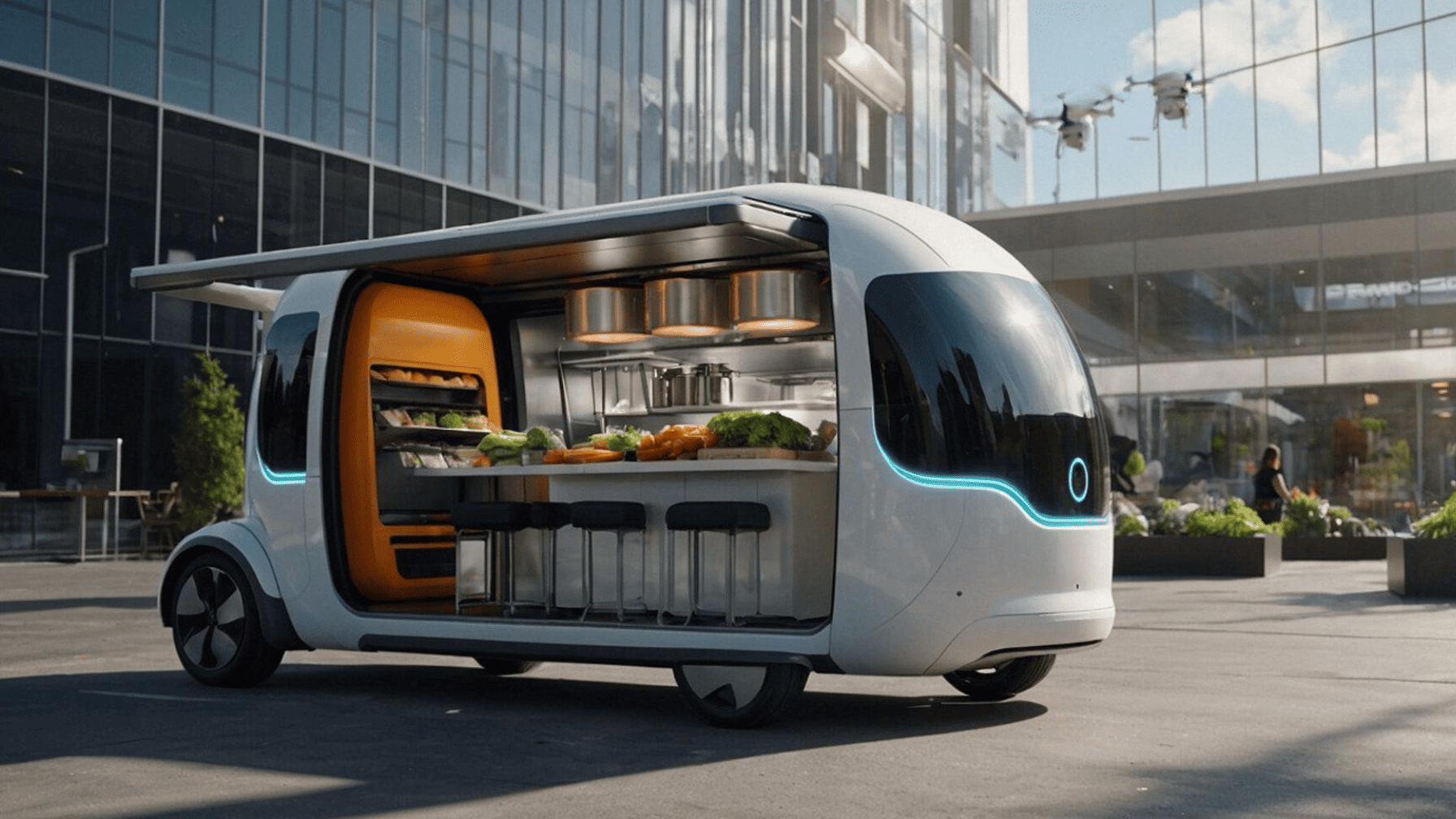Select your language
Select your language
The international artificial intelligence (AI) market was valued at $196.63 billion in 2023, which will grow at a rate of 36.6% from 2024 to 2030. What underlies this growth is the relentless research and innovation, above all, the so-called tech giants, wanted to incorporate advanced technologies into different sectors such as automotive, healthcare, retail, finance, and manufacturing.
AI's influence can be seen in a variety of industries, machining, and persuading people with less interaction and effort. The COVID-19 pandemic has acted as a catalyst, thereby resulting in the demand for home delivery services, and the food delivery sector has evolved accordingly. Then, those who moved to food aggregators, others turned to invest in automating their own delivery systems to get along with the shifting consumer behavior.
When we gaze at the horizon of 2025, it is expected that a variety of new trends will arise, thus, the global food delivery and other industries will be enhanced by them.
By 2025, food delivery will go through a vast evolution thanks to AI and automation. AI will be extensively utilized to optimize the logistics, which includes planning the route and predicting the peak order time. Predictive analytics will provide the companies to optimize resources, decrease downtime, and at the same time offer customized solutions to the customers.
Automated systems will revolutionize the whole operation right from order intake to processing, with the result of lowering human involvement, thereby increasing the speed and reliability of the service.
Virtual assistants are going to change the game in how customers interact with food delivery platforms. Even though just some front-line restaurants adopt virtual assistants, this domain is on the verge of rapid and relatively high growth. These AI-operated systems take voice instructions, finish orders, and connect with pos (POS) systems. By digitizing these tasks, restaurants will automate the processes and benefit customers, making it self-ordered as speaking a command. Similarly, virtual assistants will contribute to the removal of human error, thus facilitating smooth order processing and saving time for both staff and customers.
Robotic vans are going to be the game changers for grocery delivery in the year 2025. California Company Robomart is steering the ship by utilizing self-driving electric vans functioning as mobile grocery stores, in which customers can shop in the van directly. This invention's purpose is to establish a fleet of mobile stores that bring fresh fruits and vegetables and other necessities to the customers' homes, therefore, delivery times will be cut and more convenience will be provided.
Cloud kitchens are another very important trend that is coming up. Usually, those kitchens operate for the delivery purpose exclusively without the need for any physical dining spaces. The global cloud kitchen market was valued at $58.61 billion in 2022 and is forecast to reach $177.85 billion by 2032. While the food delivery market keeps growing, cloud kitchens become a more and more affordable choice for restaurants in that they are lowering the overhead budget and increasing the outreach capability.
The consumer’s preferences are quickly transforming. They prefer convenient and healthy food options as well as personalized menus. Thanks to AI technology, restaurants can provide custom meal plans to customers according to their dietary preferences or health goals. This personalized approach to dining creates a more positive atmosphere for the customers and boosts their loyalty.
The governments of the countries are also the ones to drive the shift of businesses towards greener practices. The laws that have been made about transportation and packaging will become even more stringent by 2025. The restaurants that are the first to adopt "green" technologies may not only be the ones that comply with the regulations but may also get some tax incentives and government support.
The food delivery business is on the verge of another transformation that is largely due to the advancement of AI, automation, and sustainability. Restaurants that are potential leaders in the future by adopting trends such as virtual assistants, robotic vans, cloud kitchens, and eco-friendly deliveries will have better chances to survive in a competitive and fast-changing market. These companies, via the combination of these developments, can increase performance, give tailored services, and satisfy the desires of consumers who care about environmental issues. The future of food delivery is set for the delivery of greater facilities, operation efficiency, and sustainability by the use of technological advancements.
